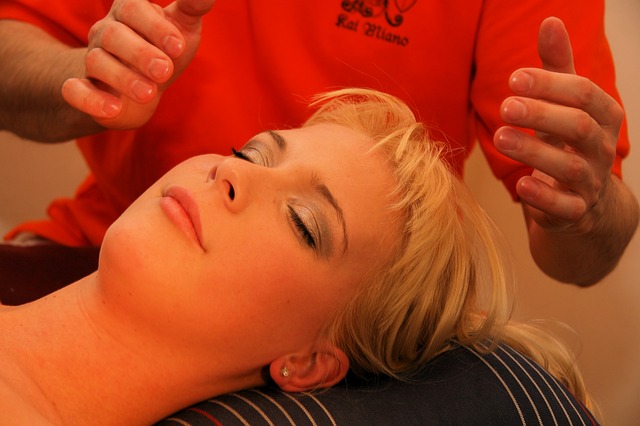Shiatsu (Japanese from shi, meaning finger, and atsu, meaning pressure) is a traditional hands-on therapy originating in Japan. There are two main Shiatsu schools; one based on western anatomical and physiological theory and the other based on Traditional Chinese Medicine (TCM).
Shiatsu is regulated as a licensed medical therapy by the Ministry of Health, Labour and Welfare (Japan), and elsewhere by various governing bodies set up by Shiatsu practitioners.
Shiatsu is an evolving form, and its various styles incorporate (to differing degrees) aspects of Japanese massage traditions, Chinese Medicine practice, and “Western” anatomy and physiology.
History
Shiatsu, as well as Teate (medical treatment), pronounced te-a -te originated in Japan. There were many hands-on therapies called Teate before traditional Chinese therapies such as Acupuncture and Tuina (called Anma in Japan) were introduced to Japan around 1000 AD.
The practice of this massage was a semi-mystical activity performed by women and the blind. The term shiatsu may have been first cited in a 1915 book, Tenpaku Tamai’s Shiatsu Ryoho.
Tokujiro Namikoshi founded the Japan Shiatsu College in 1940 and systematised a form of shiatsu therapy based on Western anatomy and physiology.
In Japan, Namikoshi’s system enjoys special legal status, and its adherents often credit him with the development of shiatsu; the story is told that at age seven, Tokujiro Namikoshi developed a technique of pressing with his thumbs and palms as he tried to nurse his mother who suffered from rheumatoid arthritis.
Shizuto Masunaga, originally a student and then teacher at the school, and professor of psychology at the Tokyo University, opened his own school (Iokai Center of Shiatsu) and taught what has become known as the Zen style of Shiatsu based on Traditional Chinese Medicine.
Namikoshi treated many high profile persons such as former Japanese Prime Minister Shigeru Yoshida and other successive prime ministers, the prosecutor for the International Military Tribunal for the Far East, Prosecutor Keenan, as well as celebrities like Marilyn Monroe and Muhammad Ali, though it was Masunaga’s book, Zen Shiatsu, published in the 1970s that was instrumental in establishing the techniques outside Japan.
Other styles of shiatsu exist; adherents of the Namikoshi school generally contend that these are derived from the work of Namikoshi and refer to them as Derivative Shiatsu.
It is to be noted, however, that Namikoshi’s school was (and continues to be) devoted to reconciling the ancient massage arts of Japan with Western medicine in line with the efforts Japan made since the turn of the 20th century to ‘westernise’ certain elements of its culture, and it ignores traditional Chinese medicine and its systems of channels.
Masunaga, on the other hand, was intent on reconciling the massage arts with traditional Chinese medicine, and went back to early texts (such as the Huang-Di Nei Jing – The Yellow Emperor’s Essentials of Medicine, a compilation of Taoist theory and a text book of acupuncture) which influence most Shiatsu styles today.
You can find much more information on living a holistic lifestyle in these free magazines and on our YouTube channel.
Information courtesy of wikipedia






